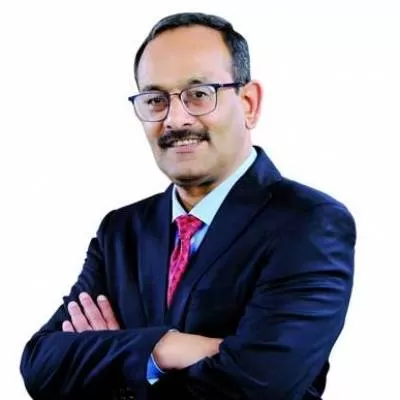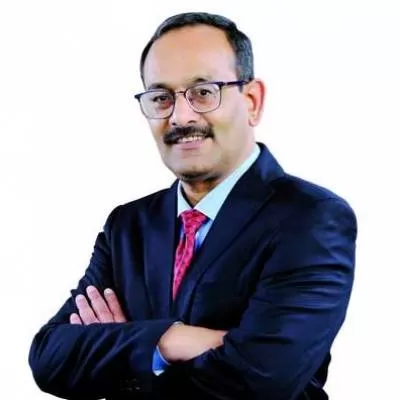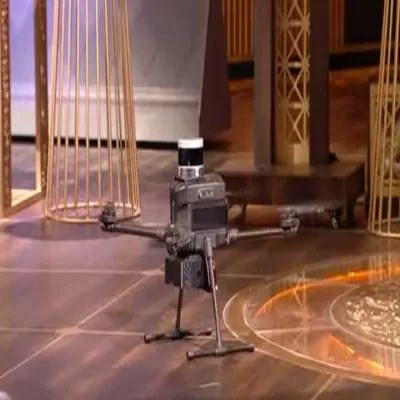- Home
- Technology
- How overseas contractors working in the country and updated govt norms could boost the adoption of advanced tunnelling technologies in India

How overseas contractors working in the country and updated govt norms could boost the adoption of advanced tunnelling technologies in India
Tunnelling in India has seen some huge successes with hectic metro-rail construction in congested cities, the creation of traffic tunnels in the North and Northeast, and irrigation projects down South.<br /> <br /> 'We are seeing a 35-40 per cent growth in the specialised tunnelling equipment market; this growth will subside to 10-15 per cent over the next five years,' says <span style="font-weight: bold;">Puneet Narula, General Manager, Equipment Business, Normet India.</span> 'Current growth is primarily owing to the large number of tenders floated for rail and road projects across India.'<br /> <br /> 'We are seeing a lot of focus on the creation of traffic tunnels in Jammu and Kashmir and the Northeast, in particular, to serve forward areas along the border; this is creating opportunities for the deployment of our drilling rigs,' says <span style="font-weight: bold;">Anirban Sen, Business Line Manager, Underground Rock Excavation, Epiroc Mining India.</span> 'Most of the tunnels in the North are for road traffic while the tunnels in the Northeast are for rail services.'<br /> <br /> <span style="font-weight: bold;">Upcoming opportunities</span><br /> Opportunities are arising from investments in tunnels for various applications, such as roads, rails, caverns and hydropower, according to <span style="font-weight: bold;">Prabhat Mittal, Business Line Manager, Sandvik Mining and Rock Technology</span>.<br /> <br /> India presents enormous scope for tunnelling for urban infrastructure and transportation, says <span style="font-weight: bold;">Manoj Garg, Managing Director, Herrenknecht India.</span> 'With the government¦s renewed focus on infrastructure development, in particular the growing focus on metro construction, we expect to see demand for tunnel boring machines (TBMs) grow.' Among upcoming opportunities, he lists metro projects in Bengaluru (Phase-2), Chennai (Phase-2), Delhi (Phase-4), Pune, Lucknow (Phase-2), Indore, Agra, Kanpur, Meerut and Patna, and the Delhi-Meerut Rapid Rail.<br /> <br /> According to Narula, upcoming opportunities include the metros in Mumbai, Kolkata and Delhi; hydropower projects; rail and road projects in Jammu and Kashmir, Himachal Pradesh, Northeast states and Uttarakhand, such as the Zojilla bypass and Chardham connectivity project; the Mumbai-Nagpur and Mumbai-Pune expressways; tunnels connecting Rewa-Singrauli in Madhya Pradesh; and some underground irrigation projects in southern India.<br /> <br /> 'As drilling and blasting is the preferred method for tunnelling in undeveloped areas for being more cost-effective and faster, we count the Mumbai-Nagpur Expressway as an interesting upcoming opportunity,' says Sen.<br /> <br /> For his part, <span style="font-weight: bold;">Amitava Paul, Assistant Vice President, Punj Lloyd and HDD Specialist,</span> sees scope for horizontal directional drilling to be applied wherever trenching or excavating is not practical for the installation of underground pipes, conduits and cables in cities where the impact on the surrounding area is sought to be minimised. In general, he says, 'More tunnelling should be encouraged wherever applicable to avail the advantages of faster construction time and less disruption to the environment vis-a-vis conventional construction, with due consideration to economic viability.'<br /> <br /> <span style="font-weight: bold;">Preferred equipment </span><br /> In India, limited awareness of the complete range of advanced tunnelling equipment, leading to lower demand, has restricted the Normet Group to offer only a small selection of its portfolio in the country, according to Narula. At present, Normet is focussed on supplying state-of-the-art concrete spraying machines for the mechanised application of wet shotcreting. Normet shotcrete machines are specially designed with a low pulsation pump, synced with the NorSmart chemical dosing system for the uniform spraying of concrete on the surfaces of tunnels; this drastically reduces wastage of concrete.<br /> <br /> In the metro space, Normet has a limited role for the shotcreting of cross passages where most jobs are done by the TBM. For intricate zones and shafts, an effective solution is the combination of the Minimec (robotic track-mounted sprayer) and the Norstreamer (shotcrete pumping unit).<br /> <br /> Normet India also offers geotechnical solutions with a range of ground consolidation products including injection resins, specialist cementitious-based systems for repairs, injections and sealing, admixtures for concrete grouts, grease products for TBMs, polyurethane injection resins, sprayed concrete and grout accelerators, ground engineering injection systems, structural waterproofing systems and TBM sealants, chemical application equipment and accessories, etc.<br /> <br /> 'In India, our most popular tunnelling jumbo is the DT820, a model suitable for tunnel sizes of up to 110 sq m,' says Mittal, noting that other models deployed in India include the DT1130 and DT1231, both for wider tunnels.<br /> <br /> <span style="font-weight: bold;">Advancing technology</span><br /> 'While some of the tunnels in Jammu and Kashmir were excavated by overseas contractors that have graduated to using only computerised drilling rigs, Indian contractors are gradually becoming more aware of the usefulness of our computerised Rig Control System to ensure precision and productivity,' says Sen. <br /> <br /> 'With this underground drilling software, engineers can easily transfer the tunnel design to the rig, thus doing away with the need to mark the face prior to drilling and eliminating or minimising over-break and the associated costs involved in transporting the extra muck and concreting the over-break.' He adds, 'Despite the high owning cost of the computerised rig, it is a good sign that the first tender for the Rishikesh-Karnprayag rail link specifies a computerised drilling system.'<br /> <br /> In the horizontal directional drilling segment, demand is increasing for drilling rigs with higher rotary torque and push-pull force capabilities with advanced control cabin design, says Paul, pointing out that most of Punj Lloyd's advanced horizontal directional drilling rigs are imported from Europe and the US. 'Rigs with 500 tonne and 600 tonne pull force and 150 KNm plus torque capacities are already available in the market and equipment manufacturers are gearing up to meet expanding needs.'<br /> <br /> <span style="font-weight: bold;">New solutions</span><br /> While Sandvik offers regular tunnelling jumbos as well as those featuring advanced instrumentation and digitisation technology in India, takers for the advanced models are yet to grow. 'We encourage users to adopt advanced technologies because those can reduce the human errors in tunnelling and improve productivity, progress and tunnelling profile,' says Mittal.<br /> <br /> India would benefit from introducing equipment that could automate tunnelling processes, such as explosive charging solutions and underground utility installation equipment, which can reduce cycle time and increase the pace of construction of tunnels, says Narula, also noting that a review of government tunnelling guidelines would help expand demand for advanced tunnelling equipment and ultimately help increase the pace of infrastructure development in a safe and cost-effective manner.<br /> <br /> 'Especially, there is extreme urgency for the mechanisation of explosive charging, to increase the pace of construction of tunnels and improve control on the consumption of explosives, which is in the interest of national safety,' he explains. 'It is a proven fact that mechanised explosive charging is cheap and fast.'<br /> <br /> To train operators in using advanced equipment, the Normet Group has installed simulators in its Jaipur manufacturing facility. 'Simulators mimic the conditions operators would face on site, thus helping contractors work more effectively and enjoy higher uptime and reduce rebound,' says Narula. 'We have simulators in Pune to train operators in using the computerised rigs,' adds Sen.<br /> <br /> <span style="font-weight: bold;">What sort of TBMs will India demand?</span><br /> Based on past metro projects, closed face tunnel boring machines (TBMs) like EPB and mixed (slurry) shields have a higher probability being used for most of the upcoming metro projects, opines <span style="font-weight: bold;">Manoj Garg, Managing Director, Herrenknecht India.</span> However, this is subject to the outcome of local hydrology and geological reports.<br /> <br /> <span style="font-weight: bold;">Consider Mumbai as an example. Garg explains: </span>'The city's bedrock depth is 5 m to 20 m below ground level and mostly consists of soft and hard basalt rock due to the Deccan traps. So, the underground Metro Line-III is being built at an average depth of 15 m while the stations will be located at a depth of 20 m to 25 m with layers of soil separating them from the surface. High specification EPB or mix- shields are the most suitable kinds of TBM for these geological conditions and to also meet the challenges arising from intense urbanisation and the possibility of water ingress.'<br /> <br /> <span style="font-weight: bold;">Underwater Tunnelling in India</span><br /> India's first under-river tunnel carrying a metro line has almost completely been constructed in Kolkata, for the metro. And this is only the beginning.<br /> <br /> 'A lot of scope exists for underwater tunnelling in India,' says <span style="font-weight: bold;">Manoj Garg, Managing Director, Herrenknecht India. </span>'India's first undersea tunnel will be created for the Mumbai-Ahmedabad High Speed Rail (bullet train) corridor. <br /> <br /> Of the total distance of 508 km, 21 km will run underground from Bandra-Kurla Complex to Kalyan Shilphata, and include a 7-km stretch under the Thane creek (1.8 km under the seabed, the rest under the mangroves marshland on either side of the creek).'<br /> <br /> Another upcoming project, according to Garg, will be the MoRTH Dhanushkodi-Talaimannar project in Tamil Nadu, involving the construction of a 22-km sea bridge and underwater tunnel from Rameswaram to Talaimannar.<br /> <br /> That said, inserting a note of caution,<span style="font-weight: bold;"> Prabhat Mittal, Business Line Manager, Sandvik Mining and Rock Technology,</span> observes that the economics of underwater tunnels in India and the impact of tunnelling activity on the surrounding ecosystem are yet to be ascertained.<br /> <br /> <span style="font-weight: bold;">Overcoming the Challenges of Horizontal Directional Drilling</span><br /> Punj Lloyd's horizontal directional drilling arm, PLN Construction, was the first company to construct a long-distance crossing of roughly 2,600 m in Gujarat, using the 'meet-in-the-middle' technique. Amitava Paul, Assistant Vice President, Punj Lloyd and HDD Specialist, details the challenges to watch out for when using horizontal directional drilling, especially for very long-distance crossings, and ways to overcome them:<br /> <ul> <li>Despite a well-conceived design and work methodology, unexpected changes in the underground strata can throw your plans off keel. </li> <li>So put in place contingencies to handle uncertainties. Hiring a skilled crew and selecting the right equipment are prerequisites to achieve uninterrupted execution.</li> <li>The down-hole intersect survey technique is a boon in challenging long-distance crossings. Implement an effective mud handling system.</li> <li>Breakdowns can upset your schedules, especially in very long-distance crossings. Arrange for the timely delivery of critical spares and breakdown management.</li> <li>Be smart while formulating the right bid price. On the one hand, you will face the pressure of bid winning. On the other, building up the cost of various components, including contingencies, is very important.</li> <li>A challenge specific to India is the absence of risk sharing between the owner of the facility and the contractor. Here, contractors shoulder the entire responsibility.</li></ul><br /> <span style="font-weight: bold;">- Charu bahri</span><br /> <br /> To share your views on the market for Tunnelling and Trenching Equipment in india, write in at feedback@ConstructionWorld.in<br />



















